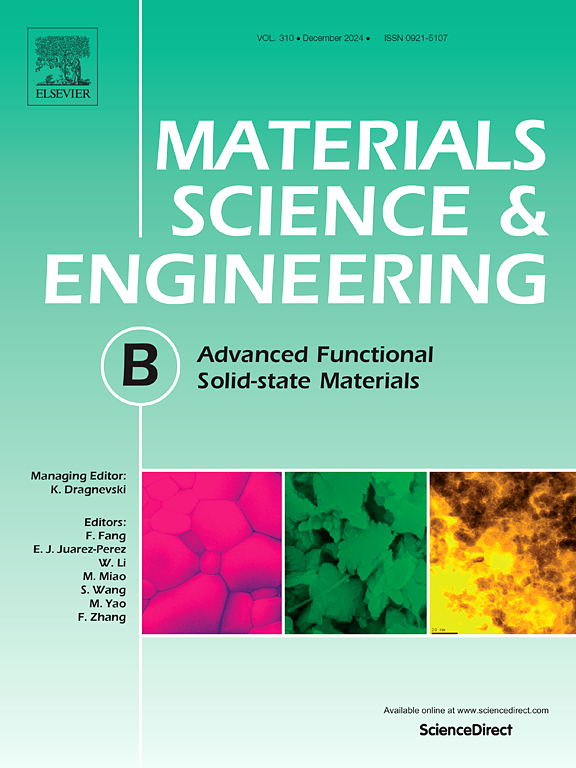溶胶凝胶介导合成Sb5+掺杂镍钴酸盐(NiCo2O4)尖晶石结构:揭示Sb5+在提高NiCo2O4比电容中的作用
IF 4.6
3区 材料科学
Q2 MATERIALS SCIENCE, MULTIDISCIPLINARY
引用次数: 0
摘要
本文研究了锑(Sb)在NiCo2O4纳米晶中作为超级电容器电极的作用。采用XRD细化法对材料进行表征,确定其晶体参数。随着Sb浓度的增加,BET表面积增大,5% Sb: NiCo2O4的BET表面积达到194.18 m2/g。利用电化学阻抗谱(EIS)、恒流充放电(GCD)和循环伏安法(CV)研究了电化学功能。在0.5 A/g电流密度下,5% Sb: NiCo2O4电极材料的比电容高达1449F/g,在3000次循环运行后电容保持率约为85%。5% Sb: NiCo2O4电极材料的能量密度为38.61 Wh/kg,功率密度为643.9 W/kg。EIS结果表明,在5% Sb: NiCo2O4电极材料中掺杂Sb后,电极的电荷转移电阻(Rct)和串联电阻(Rs)分别达到2.59 Ω和0.0591 Ω。本文章由计算机程序翻译,如有差异,请以英文原文为准。
Sol-Gel mediated synthesis of Sb5+-doped nickel cobaltite (NiCo2O4) spinel structures: unveiling the role of Sb5+ in enhancing the specific capacitance of NiCo2O4
The function of antimony (Sb) in NiCo2O4 nanocrystals as supercapacitor electrodes is thoroughly examined in this work. XRD refinements were used to characterize the materials to determine their crystal parameters. BET surface area was increased while Sb concentration rose and reached 194.18 m2/g for 5 % Sb: NiCo2O4. Electrochemical functionality was investigated using electrochemical impedance spectroscopy (EIS), galvanostatic charge–discharge (GCD), and cyclic voltammetry (CV). A high specific capacitance of 1449F/g and strong capacitance retention of around 85 % after 3000 cycle runs are displayed by the 5 % Sb: NiCo2O4 electrode material at a current density of 0.5 A/g. 5 % Sb: NiCo2O4 electrode material had a greater energy density of 38.61 Wh/kg and a power density of 643.9 W/kg. According to EIS, the charge transfer resistance (Rct) and series resistance (Rs) were reduced upon Sb doping and reaching to 2.59 Ω and 0.0591 Ω respectively, for 5 % Sb: NiCo2O4 electrode material.
求助全文
通过发布文献求助,成功后即可免费获取论文全文。
去求助
来源期刊

Materials Science and Engineering: B
工程技术-材料科学:综合
CiteScore
5.60
自引率
2.80%
发文量
481
审稿时长
3.5 months
期刊介绍:
The journal provides an international medium for the publication of theoretical and experimental studies and reviews related to the electronic, electrochemical, ionic, magnetic, optical, and biosensing properties of solid state materials in bulk, thin film and particulate forms. Papers dealing with synthesis, processing, characterization, structure, physical properties and computational aspects of nano-crystalline, crystalline, amorphous and glassy forms of ceramics, semiconductors, layered insertion compounds, low-dimensional compounds and systems, fast-ion conductors, polymers and dielectrics are viewed as suitable for publication. Articles focused on nano-structured aspects of these advanced solid-state materials will also be considered suitable.
 求助内容:
求助内容: 应助结果提醒方式:
应助结果提醒方式:


